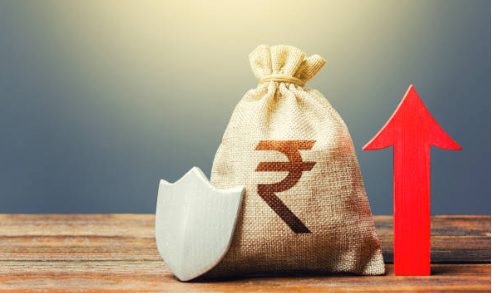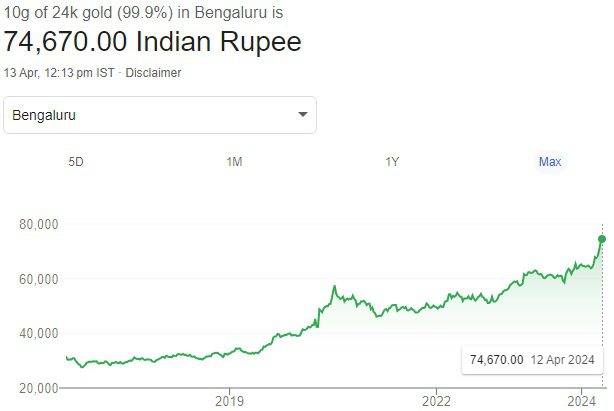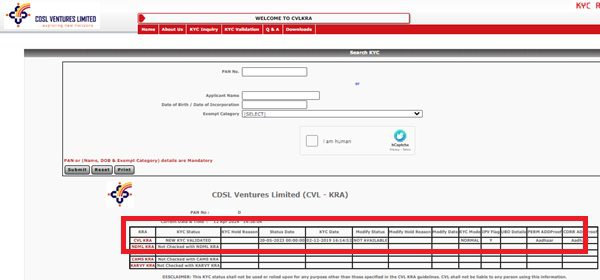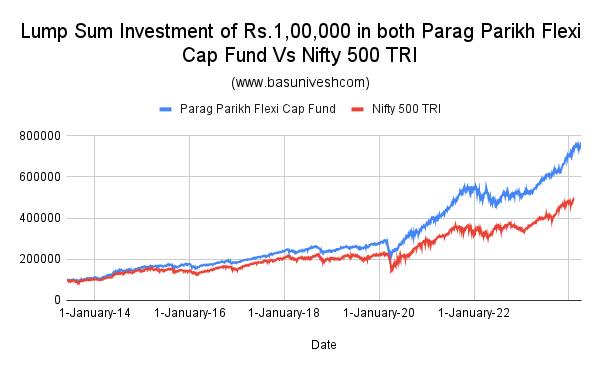Recently when Canara Bank FD rates increased, many started asking which one to choose between 7.19% Canara Bank FD Vs 7.38% Government Bond.

Currently, Canara Bank is offering the FD at 7% for 666 days and for 5 years & above to 10 Years FDs. As the Bank FD rates are quarterly compounding, the effective yield on these FDs is 7.19%. Considering the nationalized bank status, many obliviously will be looking for such a good offer.
At the same time, the current 10-year Government Of India Bond is available at the coupon rate of 7.26%, and the Yield To Maturity (YTM) as of 28th October 2022 is 7.38%.
Obviously, people will get confused here. Because one is nationalized bank (which may feel safe) and another is the Government Of India Bond (which is also safer), then which one to choose between these two?
7.19% Canara Bank FD Vs 7.26% Government Bond – Which one to choose?
Both look attractive. However, both have different features with different risks. Hence, you must understand these facts before jumping into investing.
# Understand your requirement
Before jumping into choosing any products or assets, first, you must have clarity about why you are investing. As these two products are debt in nature but with different features, try to first understand your requirement.
What portion of your portfolio is used for this and why you have to allocate is more important than blindly following the returns.
# Features of Bank FDs Vs Govt Bonds
1. Volatility
In terms of fixed deposits, they are not trading instruments. Hence, there is no volatility, and you are assured of returns if you hold it till maturity (in case of premature withdrawal there may be a small portion of penalty). However, in the case of Govt Bonds, they are traded in the secondary market and if you wish to sell them before maturity, then your total gain or loss depends on at what price the bond is trading.
As the price of bond movement is linked to the interest rate movement, these government bonds are highly volatile and this volatility will be high for long-term bonds than short-term bonds.
However, if your idea is to hold the bond till maturity, then you no need to worry about volatility. Because during the bond tenure Government will regularly pay you the interest on half yearly basis and repayment of principal at maturity is sure. The impact of volatility will come into the picture if you are selling the bond in the secondary market before maturity.
2. Interest Payout
In the case of FDs, the interest payout option is up to you to decide whether you need a constant stream of income or not. Otherwise, you have the option to accumulate the interest and get both the principal and interest at maturity.
However, in case of Govt Bonds, the coupon (interest) will be payable on a half-yearly basis and at maturity, you will get the principal amount invested.
3. Safety
Regarding safety, in the case of Bank FDs, the maximum insurance coverage is up to Rs.5 lakh. But as this is a public sector bank, the probability of the bank going bankrupt is the rarest of the rare event in India. However, in the case of Government Bonds, as the issuer is the Government Of India, they are safe.
4. Taxation
In both cases, the interest is taxable as per your tax slab. Hence, from a taxation point of view, there is no such difference.
However, in the case of Bank FDs, they may deduct the TDS while paying you the interest. In the case of Government bonds, there is no concept of TDS. Hence, it is your responsibility to show it as income while filing ITR and pay the tax.
One more tax you have to bear in case of a Government Bond if you sell it before maturity. It is capital gain tax. Capital gains or losses are classified as short-term and long-term on the basis of the holding period of the asset. If the government bonds are sold after holding them for a period of more than 12 months, then gains/losses will be classified as long-term. On the other hand, if the period is less than or equal to 12 months, then gains/losses are classified as short-term.
Short-term capital gains on government bonds are taxed as per your tax slab. On the other hand, long-term capital gains are taxed at the rate of 10% (without indexation benefit).
If you bear a loss by selling the bond in the secondary market, then you are allowed to set off short-term losses from government bonds against other long-term or short-term capital gains from other securities such as shares, mutual funds, etc. However, do keep in mind that long-term capital losses from government bonds can only be adjusted against long-term capital gains from other securities such as shares, mutual funds, etc.
# Liquidity
In terms of Bank FDs, you no need to worry about liquidity. You just have to approach the bank and request for early withdrawal. Obviously, there may be a small % of the penalty.
However, in the case of a Government Bond, you have to sell it in the secondary market. As I mentioned above, the price depends on the interest rate movement. Either you may get a higher price or a lower price than its face value. Also, there must be sufficient buyers to buy your bond. Otherwise, you have to wait for buyers and the right price.
# Asset Allocation
Don’t put everything in such Bank FDs or Govt Bonds just because they are offering you a higher rate. Try to understand your goal and accordingly include some portion of equity. This helps you to beat inflation. You must always have a mindset to calculate the return as a REAL RETURN (Nominal Return – Inflation Rate).
Debt is mandatory for all goals. But it does not mean you invest everything in debt.
Conclusion – Considering all these features, if you are unfamiliar with the volatility, liquidity issue, and safety, then I suggest Canara Bank FD over the Government Bond. However, keep one thing in mind you must have a proper plan and need to choose these two categories of the product rather than just investing for the sake of high returns. Both have different features for different needs. Hence, take a cautious call than a BLIND CALL.










9 Responses
Basu sir. Can you share your thoughts on the following questions I had on the bond market
1. Where do you see us India in the interest rate cycle? Is this the end of the interest rate cycle i.e. has it peaked and if not then when do you expect it to peak.
2. For Capital gains what do you suggest buying bonds or gilt funds( Buy at High interest rate environment to selling them at a lower interest rate environment): For that I need suggestions upon
a. Which gilt Fund do you suggest just to gain from the capital gains by attempting to time the interest rate cycle.(I have a 2% portfolio allocated for this)
b. If I buy the 10 year bond which currently is 7.26 GS 2032
I)In how many years do you think we can expect the 10 year will fall by 0.75 %to 1 %.
II)The most liquid bond is the 10year G-Sec which is now the new one 7.26 GS 2032 but that would be the most liquid till 9 more months. After than traders will do in the money and out of money and buy the new 10year one. But the interest rate cycle make cool off in say 2 years or so. Do you think it would be wise to play out in the 10Y one or do you suggest any other Gilt
Dear KB,
1) I DON”T KNOW. Also, don’t believe on anyone who are in predicting business.
2) First understand your requirement of why you need debt (Debt Funds or Bonds), then chose the suitable products. Don’t try to chase the yield in debt.
a) Never try to time the market.
b) Use Debt for your asset allocation rather than in predicting the yield. NONE area aware of (including GOD).
Dear Sir,
I follow your principals to the core. I know what I ask is not to be predicted or worked upon. I have about 98% of Total Portfolio in Fixed Income with Average tenure of 4 years which is the retirement requirement. I don’t want to upset you as whatever I have learnt is from your blogs and tweets. Will continue to do so.
Dear KB,
My stress is on not hurting you. Instead, I want you to understand that prediction games never succeed. Instead, keep it simple and less volatile. Especially in case of debt funds, try to avoid default or downgrade risk as much as possible. If your time horizon is around 4 years, then I insist to opt for target maturity funds.
Thank you, Sir.
Credit Risk has been taken care of.
364 DTB 01062023
,04.56 GS 2023
,06.69 GS 2024
,7.57 GUJ SDL 2026,7.54 HARYANA SDL 2027 are the holdings.
Thank you, sir
Please correct me if I’m wrong. After much research, I decided to invest in only Central Govt securities and Gujarat, Maharashtra (High Priority) & Haryana and Karnataka (Second Priority) SDLs as better off states than the rest. (Needless to say, tenure matching and tax efficiency have been addressed.)
For me, the current yield is 7.43% after tax. Does Target Maturity Funds offer a similar sovereign guarantee with a higher return? Do you have any recommendations for Target Maturity Funds if yes.
Dear KB,
Target Maturity Funds not offer higher returns. But they reduce the risk of concentration. I have written a post on this. You can refer the same.
Hi Sir,
Can you please advise if Investing in Government securities is permissible NRIs. Also, how to invest in it..I mean through online booking account or through agent..or how, I don’t know, so really appreciate if you guide.
Thanks
Dear Jay,
It depends on features. Hence, you have to cross-check before choosing a bond. You can use the RBI Retail Direct.